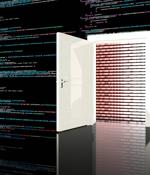Security News

Suspected state-sponsored hackers have been exploiting a zero-day vulnerability in Palo Alto Networks firewalls tracked as CVE-2024-3400 since March 26, using the compromised devices to breach internal networks, steal data and credentials. Palo Alto Networks warned yesterday that hackers were actively exploiting an unauthenticated remote code execution vulnerability in its PAN-OS firewall software and that patches would be available on April 14.

Threat actors have been exploiting the newly disclosed zero-day flaw in Palo Alto Networks PAN-OS software dating back to March 26, 2024, nearly three weeks before it came to light yesterday. The...

"Test files" associated with the XZ Utils backdoor have made their way to a Rust crate known as liblzma-sys, new findings from Phylum reveal. liblzma-sys, which has been downloaded over 21,000...

You've likely never heard of an open-source library called XZ Utils, but it's on hundreds of millions of computers. Many open-source libraries, like XZ Utils, are maintained by volunteers.

A threat actor quietly spent the last two years integrating themself in the core team of maintainers of XZ Utils, a free software command-line data compressor widely used in Linux systems. The CVE-2024-3094 backdoor found in XZ Utils was implemented to interfere with authentication in SSHD, the OpenSSH server software that handles SSH connections.

As the analysis of the backdoor in XZ Utils continues, several security companies have provided tools and advice on how to detect its presence on Linux systems. The open-source XZ Utils compression utility has been backdoored by a skilled threat actor who tried to get the malicious packages included in mainstream Linux distributions, to allow them unfettered, covert SSH access to Linux systems around the world.

A vulnerability in four old D-Link NAS models could be exploited to compromise internet-facing devices, a threat researcher has found.The existence of the flaw was confirmed by D-Link last week, and an exploit for opening an interactive shell has popped up on GitHub.

Your profile can be used to present content that appears more relevant based on your possible interests, such as by adapting the order in which content is shown to you, so that it is even easier for you to find content that matches your interests. Content presented to you on this service can be based on your content personalisation profiles, which can reflect your activity on this or other services, possible interests and personal aspects.

A threat researcher has disclosed a new arbitrary command injection and hardcoded backdoor flaw in multiple end-of-life D-Link Network Attached Storage device models. The two main issues contributing to the flaw, tracked as CVE-2024-3273, are a backdoor facilitated through a hardcoded account and a command injection problem via the "System" parameter.

Malicious code added to xz Utils versions 5.6.0 and 5.6.1 modified the way the software functions. Anyone in possession of a predetermined encryption key could stash any code of their choice in an SSH login certificate, upload it, and execute it on the backdoored device.